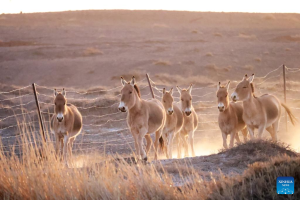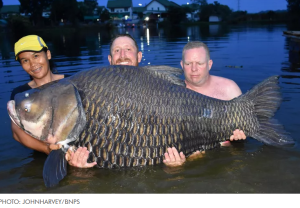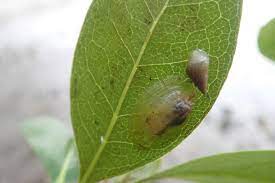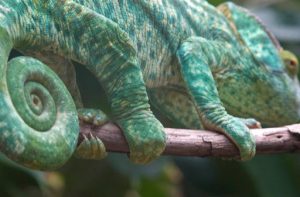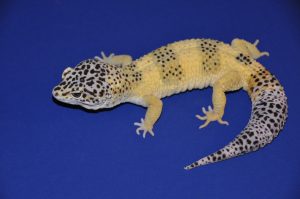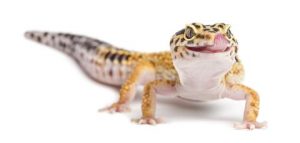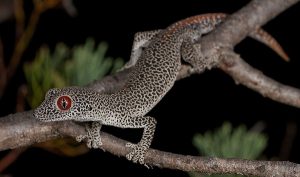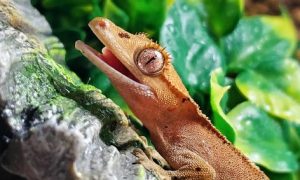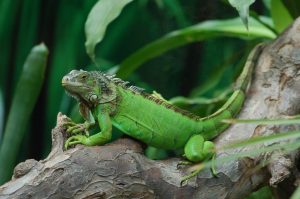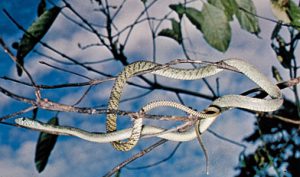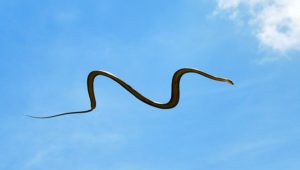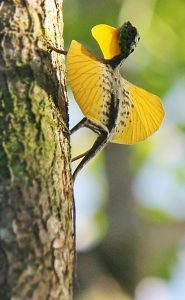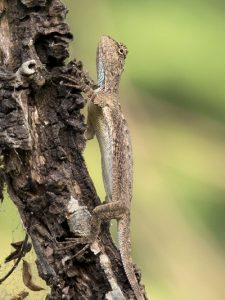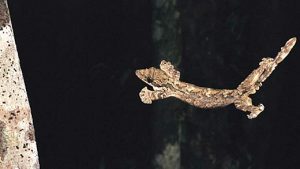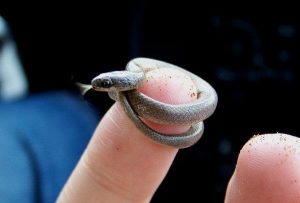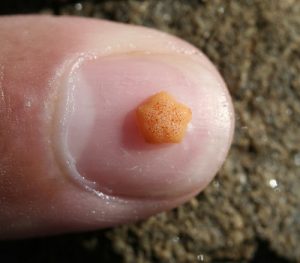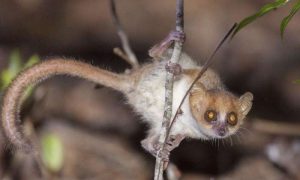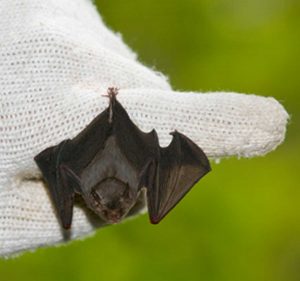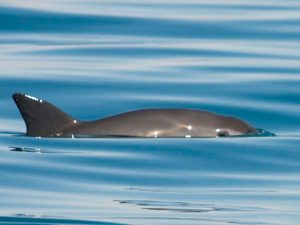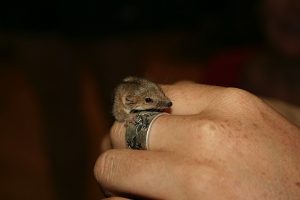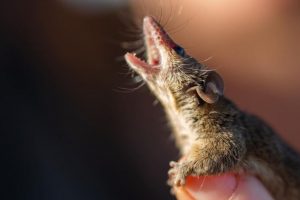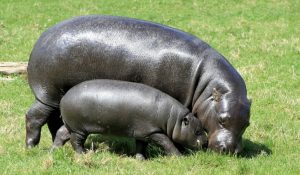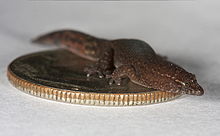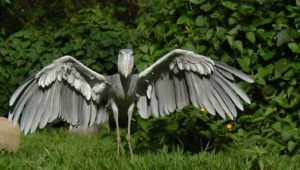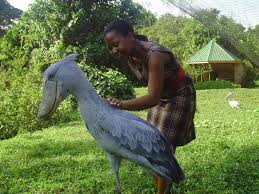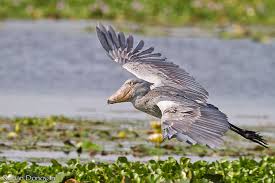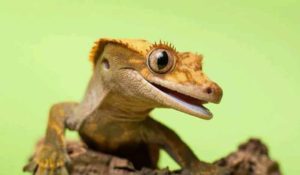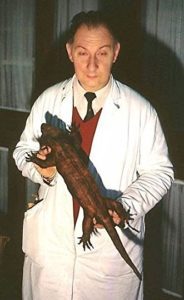Podcast: Play in new window | Download (Duration: 17:50 — 19.8MB)
It’s our annual updates episode! Thanks to Kelsey and Torin for the extra information about ultraviolet light, and thanks to Caleb for suggesting we learn more about the dingo!
Further reading:
At Least 125 Species of Mammals Glow under Ultraviolet Light, New Study Reveals
DNA has revealed the origin of this giant ‘mystery’ gecko
Bootlace Worm: Earth’s Longest Animal Produces Powerful Toxin
Non-stop flight: 4,200 km transatlantic flight of the Painted Lady butterfly mapped
Gigantopithecus Went Extinct between 295,000 and 215,000 Years Ago, New Study Says
First-Ever Terror Bird Footprints Discovered
Last surviving woolly mammoths were inbred but not doomed to extinction
Australian Dingoes Are Early Offshoot of Modern Breed Dogs, Study Shows
A (badly) stuffed lava bear:
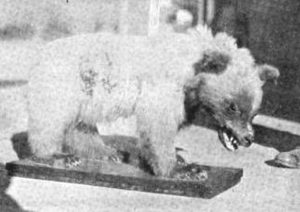
Show transcript:
Welcome to Strange Animals Podcast. I’m your host, Kate Shaw.
This week we have our annual updates episode, and we’ll also learn about a mystery animal called the lava bear! As usual, a reminder that I don’t try to update everything we’ve ever talked about. That would be impossible. I just pick new information that is especially interesting.
After our episode about animals and ultraviolet light, I got a great email from Kelsey and Torin with some information I didn’t know. I got permission to quote the email, which I think you’ll find really interesting too:
“You said humans can’t see UV light, which is true, however humans can detect UV light via neuropsin (a non-visual photoreceptor in the retina). These detectors allow the body to be signaled that it’s time to do things like make sex-steroid hormones, neurotransmitters, etc. (Spending too much time indoors results in non-optimal hormone levels, lowered neurotransmitter production, etc.)
“Humans also have melanopsin detectors in the retina and skin. Melanopsin detectors respond to blue light. Artificial light (LEDs, flourescents, etc) after dark entering the eye or shining on the skin is sensed by these proteins as mid-day daylight. This results in an immediate drop in melatonin production when it should be increasing getting closer to bedtime.”
And that’s why you shouldn’t look at your phone at night, which I am super bad about doing.
Our first update is related to ultraviolet light. A study published in October of 2023 examined hundreds of mammals to see if any part of their bodies glowed in ultraviolet light, called fluorescence. More than 125 of them did! It was more common in nocturnal animals that lived on land or in trees, and light-colored fur and skin was more likely to fluoresce than darker fur or skin. The white stripes of a mountain zebra, for example, fluoresce while the black stripes don’t.
The study was only carried out on animals that were already dead, many of them taxidermied. To rule out that the fluorescence had something to do with chemicals used in taxidermy, they also tested specimens that had been flash-frozen after dying, and the results were the same. The study concluded that ultraviolet fluorescence is actually really common in mammals, we just didn’t know because we can’t see it. The glow is typically faint and may appear pink, green, or blue. Some other animals that fluoresce include bats, cats, flying squirrels, wombats, koalas, Tasmanian devils, polar bears, armadillos, red foxes, and even the dwarf spinner dolphin.
In episode 20 we talked about Delcourt’s giant gecko, which is only known from a single museum specimen donated in the 19th century. In 1979 a herpetologist named Alain Delcourt, working in the Marseilles Natural History Museum in France, noticed a big taxidermied lizard in storage and wondered what it was. It wasn’t labeled and he didn’t recognize it, surprising since it was the biggest gecko he’d ever seen—two feet long, or about 60 cm. He sent photos to several reptile experts and they didn’t know what it was either. Finally the specimen was examined and in 1986 it was described as a new species.
No one knew anything about the stuffed specimen, including where it was caught. At first researchers thought it might be from New Caledonia since a lot of the museum’s other specimens were collected from the Pacific Islands. None of the specimens donated between 1833 and 1869 had any documentation, so it seemed probable the giant gecko was donated during that time and probably collected not long before. More recently there was speculation that it was actually from New Zealand, since it matched Maori lore about a big lizard called the kawekaweau.
In June of 2023, Delcourt’s gecko was finally genetically tested and determined to belong to a group of geckos from New Caledonia, an archipelago of islands east of Australia. Many of its close relations are large, although not as large as it is. It’s now been placed into its own genus.
Of course, this means that Delcourt’s gecko isn’t the identity of the kawekaweau, since it isn’t very closely related to the geckos of New Zealand, but it might mean the gecko still survives in remote parts of New Caledonia. It was probably nocturnal and lived in trees, hunting birds, lizards, and other small animals.
We talked about some really big worms in episode 289, but somehow I missed the longest worm of all. It’s called the bootlace worm and is a type of ribbon worm that lives off the coast of Norway, Denmark, Sweden, and Britain, and it’s one of the longest animals alive. The longest worm we talked about in episode 289 was an African giant earthworm, and one was measured in 1967 as 21 feet long, or 6.7 meters. The bootlace worm is only 5 to 10 mm wide, but it routinely grows between 15 and 50 feet long, or 5 to 15 meters, with one dead specimen that washed ashore in Scotland in 1864 measured as over 180 feet long, or 55 meters.
When it feels threatened, the bootlace worm releases thick mucus. The mucus smells bad to humans but it’s not toxic to us or other mammals, but a recent study revealed that it contains toxins that can kill crustaceans and even some insects.
We talked about the painted lady butterfly in episode 203, which was about insect migrations. The painted lady is a small, pretty butterfly that lives throughout much of the world, even the Arctic, but not South America for some reason. Some populations stay put year-round, but some migrate long distances. One population winters in tropical Africa and travels as far as the Arctic Circle during summer, a distance of 4,500 miles, or 7,200 km, which takes six generations. The butterflies who travel back to Africa fly at high altitude, unlike monarch butterflies that fly quite low to the ground most of the time. Unlike the monarch, painted ladies don’t always migrate every year.
In October of 2013, a researcher in a small country in South America called French Guiana found some painted lady butterflies on the beach. Gerard Talavera was visiting from Spain when he noticed the butterflies, and while he recognized them immediately, he knew they weren’t found in South America. But here they were! There were maybe a few dozen of them and he noticed that they all looked pretty raggedy, as though they’d flown a long way. He captured several to examine more closely.
A genetic study determined that the butterflies weren’t from North America but belonged to the groups found in Africa and Europe. The question was how did they get to South America? Talavera teamed up with scientists from lots of different disciplines to figure out the mystery. Their findings were only published last month, in June 2024.
The butterflies most likely rode a well-known wind current called the Saharan air layer, which blows enough dust from the Sahara to South America that it has an impact on the Amazon River basin. The trip from Africa to South America would have taken the butterflies 5 to 8 days, and they would have been able to glide most of the time, thus conserving energy. Until this study, no one realized the Saharan air layer could transport insects.
We talked about the giant great ape relation Gigantopithecus in episode 348, and only a few months later a new study found that it went extinct 100,000 years earlier than scientists had thought. The study tested the age of the cave soils where Gigantopithecus teeth have been discovered, to see how old it was, and tested the teeth again too. As we talked about in episode 348, Gigantopithecus ate fruit and other plant material, and because it was so big it would have needed a lot of it. It lived in thick forests, but as the overall climate changed around 700,000 years ago, the forest environment changed too. Other great apes living in Asia at the time were able to adapt to these changes, but Gigantopithecus couldn’t find enough food to sustain its population. It went extinct between 295,000 and 215,000 years ago according to the new study, which is actually later than I had in episode 348, where I wrote that it went extinct 350,000 years ago. Where did I get my information? I do not know.
The first footprints of a terror bird were discovered recently in Argentina, dating to 8 million years ago. We talked about terror birds in episode 202. The footprints were made by a medium-sized bird that was walking across a mudflat, and the track is beautifully preserved, which allows scientists to determine lots of new information, such as how fast the bird could run, how its toes would have helped it run or catch prey, and how heavy the bird was. We don’t know what species of terror bird made the tracks, but we know it was a terror bird.
We talked about the extinction of the mammoth in episode 256, especially the last population of mammoths to survive. They lived on Wrangel Island, a mountainous island in the Arctic Ocean off the coast of western Siberia, which was cut off from the mainland about 10,000 years ago when ocean levels rose. Mammoths survived on the island until about 4,000 years ago, which is several hundred years after the Great Pyramid of Giza was built. It’s kind of weird to imagine ancient Egyptians building pyramids, and at the same time, mammoths were quietly living on Wrangel Island, and the Egyptians had no idea what mammoths were. And vice versa.
A 2017 genetic study stated that the last surviving mammoths were highly inbred and prone to multiple genetic issues as a result. But a study released in June of 2024 reevaluated the population’s genetic diversity and made a much different determination. The population did show inbreeding and low genetic diversity, but not to an extent that it would have affected the individuals’ health. The population was stable and healthy right to the end.
In that case, why did the last mammoths go extinct? Humans arrived on the island for the first time around 1700 BCE, but we don’t know if they encountered mammoths or, if they did, if they killed any. There’s no evidence either way. All we know is that whatever happened, it must have been widespread and cataclysmic to kill all several hundred of the mammoths on Wrangel Island.
We talked about the dingo in episode 232, about animals that are only semi-domesticated. That episode came out in 2021, and last year Caleb suggested we learn more about the dingo. I found a really interesting 2022 study that re-evaluated the dingo’s genome and made some interesting discoveries.
The dingo was probably brought to Australia by humans somewhere between 3,500 and 8,500 years ago, and after the thylacine was driven to extinction in the early 20th century, it became the continent’s apex predator. Genetic studies in the past have shown that it’s most closely related to the New Guinea singing dog, but the 2022 study compared the dingo’s genome to that of five modern dog breeds, the oldest known dog breed, the basenji, and the Greenland wolf.
The results show that the dingo is genetically in between wolves and dogs, an intermediary that shows us what the dog’s journey to domestication may have looked like. The study also discovered something else interesting. Domestic dogs have multiple copies of a gene that controls digestion, which allows them to eat a wide variety of foods. The dingo only has one copy of that gene, which means it can’t digest a lot of foods that other dogs can. Remember, the dingo has spent thousands of years adapting to eat the native animals of Australia. When white settlers arrived, they would kill dingoes because they thought their livestock was in danger from them. The study shows that the dingo has little to no interest in livestock because it would have trouble digesting, for instance, a lamb or calf. The animals most likely to be hurting livestock are domestic dogs that are allowed to run wild.
We’ll finish with a mystery animal called the lava bear. In the early 20th century, starting in 1917, a strange type of bear kept being seen in Oregon in the United States. Its fur was light brown like a grizzly bear’s, but otherwise it looked like a black bear—except for its size, which was very small. The largest was only about 18 inches tall at the back, or 46 cm, and it only weighed about 35 pounds, or 16 kg. That’s the size of an ordinary dog, not even a big dog. Ordinarily, a black bear can stand 3 feet tall at the back, or about 91 cm, and weighs around 175 pounds, or 79 kg, and a big male can be twice that weight and much taller.
The small bear was seen in desert, especially around old lava beds, which is where it gets its name. A shepherd shot one in 1917, thinking it was a bear cub, and when he retrieved the body he was surprised to find it was an adult. He had it taxidermied and photographs of it were published in the newspapers and a hunting magazine, which brought more hunters to the area.
People speculated that the animal might be an unknown species of bear, possibly related to the grizzly or black bear, and maybe even a new species of sun bear, a small bear native to Asia.
Over the next 17 years, many lava bears were killed by hunters and several were captured for exhibition. When scientists finally got a chance to examine one, they discovered that it was just a black bear. Its small size was due to malnutrition, since it lived in a harsh environment without a lot of food, and its light-colored fur was well within the range of fur color for an American black bear. Lava bears are still occasionally sited in the area around Fossil Lake.
You can find Strange Animals Podcast at strangeanimalspodcast.blubrry.net. That’s blueberry without any E’s. If you have questions, comments, or suggestions for future episodes, email us at strangeanimalspodcast@gmail.com. We also have a Patreon at patreon.com/strangeanimalspodcast if you’d like to support us for as little as one dollar a month and get monthly bonus episodes.
Thanks for listening!
